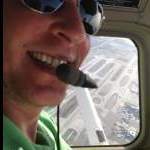Engine out on takeoff at 400'
-
Members Online
- KSMooniac
- raymondscott0321
- NickG
- Ragsf15e
- flyboy0681
- hubcap
- Aerodon
- spaceman39a
- acekng1
- TCC
- Jetdriver
- DCarlton
- gwav8or
- Jpravi8tor
- markazzarito
- caa0428
- Brandt
- Raptortail
- Wingover
- eman1200
- SScott
- richardbrochu27
- TangoTango
- CL605
- rbmaze
- Marc_B
- IvanP
- 65MooneyPilot
- rahill
- SKI
- varlajo
- hazek
- Jim Peace
- M20S Driver
- Bolter
- gdship
- Matthew P


Recommended Posts
Join the conversation
You can post now and register later. If you have an account, sign in now to post with your account.